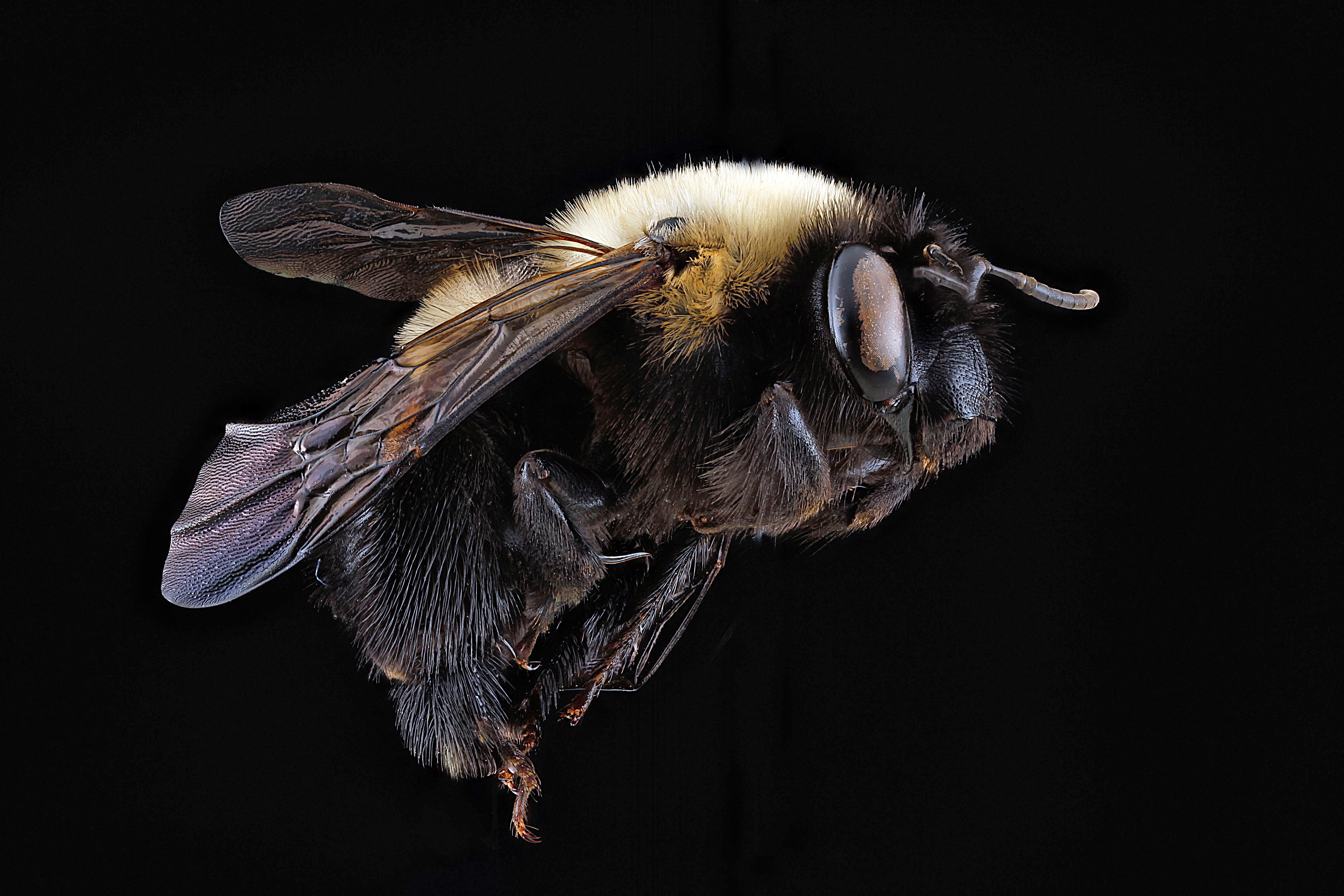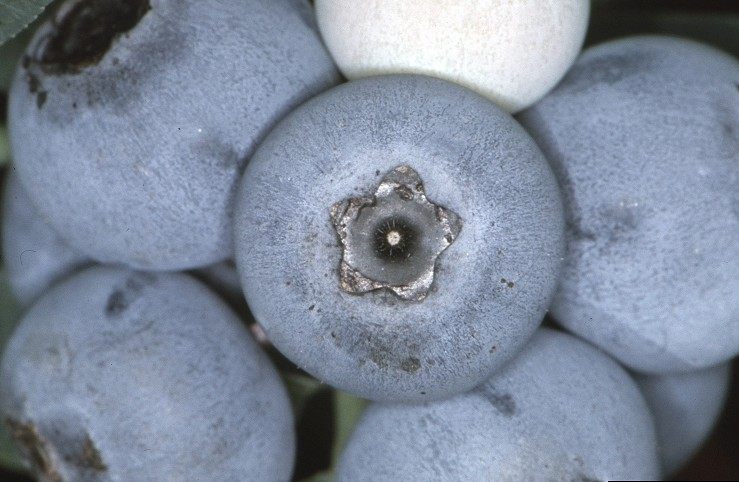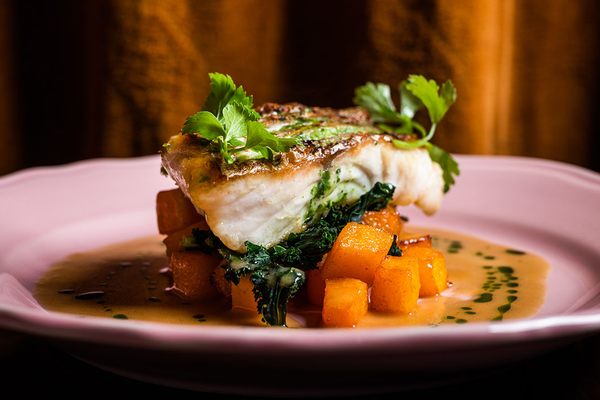The Key to Bodacious Blueberries Is a Bumper Crop of Bees
To attract them, though, it helps to have forest nearby.

Across the Southeast United States, rabbiteye blueberry farming is big business. A staple of Southern agriculture, these firm, frosty blue orbs are relatively easy to grow and have few natural pests, making them ideal for commercial purposes. The key to big, fast-maturing berries is in the pollination—when they’re amply pollinated, the burst improves. One creature is an expert at creating these most desirable berries, and their love for blueberry flowers runs so deep it’s in their name: southeastern blueberry bees.
Rabbiteye blueberries get their name from their ripening process, as they turn pink before they go blue, and recall the eyes of white rabbits. Various types of these berries are grown commercially in a number of Southern states, but the ones from Mississippi and Louisiana really stand out. There, more than 70 percent of flowers bear fruit, compared with 10 to 30 percent in some other places. When researchers from the U.S. Department of Agriculture set out to investigate why berries grow so well there, they looked to the pollinators. Their findings were published recently in the Journal of Economic Entomology.
“We looked at multiple species of bees to see which did the best job of pollinating rabbiteye blueberries,” says Robert Danka, coauthor of the study, in a statement. The researchers tested managed honeybees, native bumblebees, southeastern blueberry bees (also native), and carpenter bees over a three-year period. It turns out, as you might expect, that southeastern blueberry bees really, really love rabbiteye bushes. The team found that only southeastern blueberry bees and honeybees resulted in an increase of flowering fruits, with blueberry bees as the best pollinators by far.

When native southeastern blueberry bees land on a flowering blueberry bush, they attach themselves to the flower and begin vibrating their flight muscles rapidly, shaking pollen free from the flower’s anther. This process is known as buzz pollination, and it is extremely useful on rabbiteye blueberry flowers because of their shape. This process also causes pollen to cling to the bee’s body, and on to the next flower. Bumblebees are capable of buzz pollination, too, but there aren’t enough of them around in the key period of early spring.
Many large-scale producers have honeybees brought in to supplement the natural pollination, they aren’t all that reliable. They have a tendency to leave fields for other plants, according to the research. Southeastern blueberry bees, however, have a clear preference for their namesake. These insects are ground-nesting solitary bees, meaning they don’t form colonies or hives, and they are particularly fond of shade and leaf litter. Blair Sampson, another coauthor of the study, says that growers wishing to increase their output should consider cultivating blueberry bee–friendly woodlands near their fields.
Such changes won’t improve yields overnight. According to the study, southeastern blueberry bees had variable populations each year, depending on weather conditions. So for now, researchers suggest that large commercial operations will still need to add non-native honeybees to their crops. But perhaps, over time, the lure of producing the juiciest rabbiteye blueberries money can buy will lead to an increase in forest cover as well.
Gastro Obscura covers the world’s most wondrous food and drink.
Sign up for our regular newsletter.



















Follow us on Twitter to get the latest on the world's hidden wonders.
Like us on Facebook to get the latest on the world's hidden wonders.
Follow us on Twitter Like us on Facebook